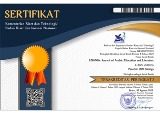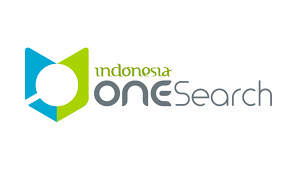Namāẓij Ta’līm an-Naḥwi fī Ma’had Nūr al-Qur’ān litaḥfīẓ al-Qur’ān Magelang Jāwā al-Wusṭā
Abstract
This article focused on studying the dynamic nahwu learning curriculum developed by Nurul Qur'an Islamic Boarding School for Tahfidz (PPNQ) Jumoyo Salam, Magelang, Central Java. It aimed at describing nahwu learning in the pesantren, focusing on memorizing the Qur'an. The method used was participatory, done by being directly involved in the learning at PPNQ, starting from the design of learning, students placement, building classes, and deciding the books used. Data were collected through observation, limited discussion, and interviews with the teachers, students, and administrators. The study found that the learning dynamics are developed in this pesantren because the curriculum is not yet stable. The dynamics are in the form of students' obligation to present on each subject (book) taught and to memorize at another time. The fact is different from the eras before this dynamic development. It is very interesting considering that the Islamic Boarding School for Tahfidz is known as a pesantren that firmly adheres to the principle of maintaining a tradition that has been going on for decades. Therefore, dynamic observations are also needed regarding subsequent developments.
Keywords
Full Text:
PDFReferences
Arifin, Z. (2021). Al-Kafaah at-Ta'limiyyah wa al-Mihniyyah lada Mudarrisi al-Lughah al-'Arabiyyah bi al-madaris al-Mutawassitah al-islamiyyah bi Mantiqah Rembang Jawa-al Wustha. Lisania: Journal of Arabic Education and Literature.
Arikunto, S. (1996). Prosedur Penelitian. Jakarta: Rineka Cipta.
Azra, A. (2002). Pendidikan Islam Tradisi dan Modernisasi Menuju Milenium Baru . Jakarta: Logos Wacana Ilmu.
Bruinessen, M. v. (2015). Kitab Kuning, pesantren dan Tarekat. Yogyakarta: Gading.
Dhofier, Z. (1982). Tradisi Pesantren. Jakarta: LP3ES.
Efendi, A. F. (2005). Metodologi Pengajaran Bahasa Arab. Malang: Misykat.
Eviatar, H. A. (2014). Learning to read in Arabic: the long and winding road. Read Writ, 650.
Eviatar, H. A. (2014). Learning to read in Arabic: the long and winding road. Read Writ.
Hanifah, U. (Vol. 3, 2014, Januari). Pentingnya Buku Ajar Yang Berkualitas Dalam Meningkatkan Efektivitas Pembelajaran Bahasa Arab.
Hermawan, A. (2014). Metodologi Pembelajaran Bahasa Arab . Bandung: Remaja Rosdakarya.
Ilmiani, A. M. (June 2020,). Multimedia Interaktif Untuk Mengatasi Problematika Pembelajaran Bahasa Arab. Al-Ta'rib.
Madjid, N. (1997). Bilik-Bilik Pesantren. Jakarta: Paramadina.
Muhsin, A. (2020). The Implementation Of Pesantren Education System In Student Independent Learning At Ar Rommel Dormitory Pesantren Darul Ulum Jombang. Tawasuth, 87.
Nababan, S. U. (1993). Metodologi Pengajaran Bahasa. Jakarta: Gramedia.
Rahimi, A. H. (7(C) (2010).). , Types of Text in Books for Learning Arabic as a Second Language: A Document Analysis,. Procedia Social and Behavioral Sciences.
Raswan. (2017). Tamyiz; Model Alternatif Pembelajaran Bahasa Arab Sebagai Bahasa Al-Qur’an. LISANUL ARAB.
Tafsir, A. (2012). lmu Pendidikan Islami. Bandung: Remaja Rosdakarya.
Wahab, M. A. (2014). Peran Bahasa Arab Dalam Pengembangan Ilmu dan Peradaban Islam. Arabiyat, 3.
Wahid, A. (1995). Pesantren Sebagai Subkultur. In M. D. Raharjo, Pesantren dan Pembaharuan (p. 102). Jakarta: LP3ES.
DOI: https://doi.org/10.18326/lisania.v6i1.88-102
Refbacks
- There are currently no refbacks.
Copyright (c) 2022 Sri Guno Najib Chaqoqo
View My Stats








